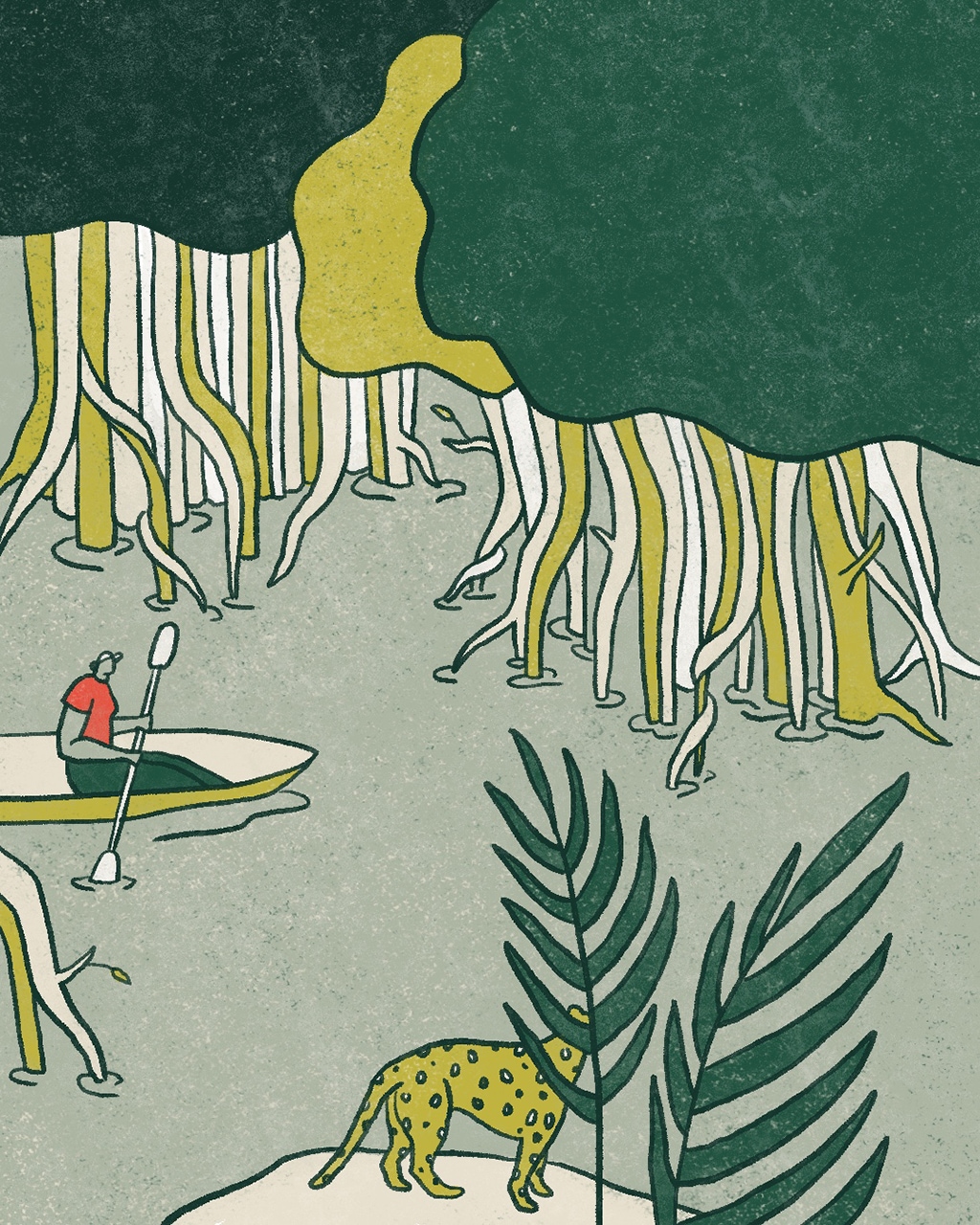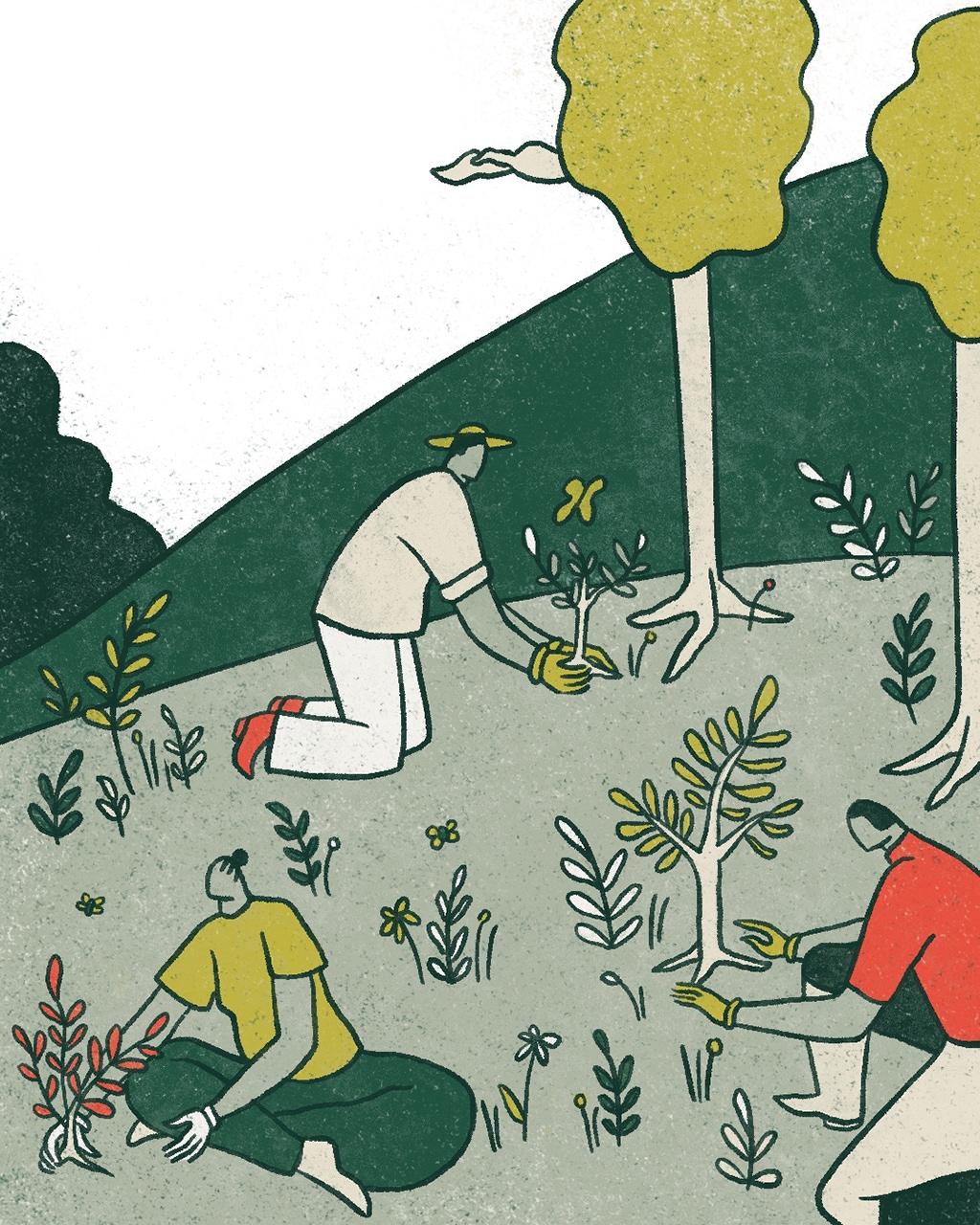Natural places—from city parks to farther-flung outside spaces—provide boundless opportunities for recreation and relaxation. Being outside gives a boost to our physical and mental health, even while the natural world around us is undertaking countless unseen measures to protect and restore itself from the damaging effects of climate change. Earth’s soil, shorelines, waterways and forests have been successfully recycling carbon for hundreds of millions of years. But over the past century and a half, human activity has pumped massive amounts of carbon into the atmosphere, overwhelming natural processes. We’d be toast without the planet’s carbon-capturing superheroes that include humus, peat, trees and seaweed.
If we give nature the support it needs—for instance, by reducing our use of fossil fuels and other carbon-emitting technology—we will have a better chance to protect the Earth’s built-in organic off-ramps for carbon.
Here are some of the ecosystems that can hyperdrive our climate action.

Forests
Hiking through forests of oak and beech or mountain biking on trails winding among fir trees, you’re slapped in the face—sometimes literally—by vegetation that’s helping sequester the excess carbon that would otherwise contribute to climate change.
One third of the U.S. is covered in forests, which consume atmospheric carbon and store it above ground in tree trunks, branches, leaves and pine needles, and below in tree roots and soil. They’re taking a big bite out of America’s emissions: Forests capture 16% of the nation’s carbon dioxide emissions annually. Worldwide, about half of the planet’s land-based carbon is banked in forest vegetation and soil.
The good news is that over the past 30 years, the accumulated carbon stocks being held by the nation’s forests has increased by 30%; the bad news is that environmental changes have slowed the amount of carbon being soaked up each year. Severe wildfires, droughts and the spread of pests and disease—all of which are being stoked by climate change—undermine forest health and ultimately, their capacity to absorb carbon.
“The key actions are to conserve the forests we have; add more forests with tree planting and other reforestation; and use climate-smart forestry techniques that will help our forests capture more carbon and remain resilient in the face of climate change,” says Jad Daley, president and CEO of the nonprofit—and REI partner—American Forests. REI partners with and provides funds to American Forests in order to raise awareness about climate equity.
If we take all these steps to their full potential, some scientists predict that “we could nearly double the carbon dioxide captured in America’s forests each year,” Daley added.

Oceans and coastlines
As you launch your paddle board and glide out from the beach, perhaps you glimpse meadows of seagrass beneath the waves. A little farther out, maybe you encounter a kelp forest and its bobbing bulbs and ribbony blades of seaweed.
Marine plants are nurseries for sea life and homes to sea urchins, herring, crabs, otters and other creatures. But these habitats and their coastal cousins—including stands of mangrove trees and muddy tidal flats—are also crucial carbon sinks, soaking up and capturing vast amounts of carbon dioxide. One study estimates that macroalgae such as kelp absorb 200 million tons of carbon dioxide annually, a volume roughly equivalent to New York state’s CO2 emissions. The habitats are so critical to slowing climate change that they’ve been dubbed “blue carbon” ecosystems.
Marine and coastal habitats do more than store carbon in the vegetations’ grassy or algal blades, leaves, branches and roots. Plant material is slow to degrade below the ocean’s surface, so when it dies and sinks into the sea, the carbon gets trapped in the sediment. The vegetation also protects shoreline communities from flooding and storm surges.
“Tidal ecosystems can sequester up to 10 times more carbon per unit area than upland forests, and because that carbon is in the soil rather than the biomass, it can be stable there for much longer,” says Hilary Stevens, coastal resilience senior manager for Restore America’s Estuaries.
“However, when those tidal systems are degraded, drained or developed,” she says, “that carbon is released back into the atmosphere quite rapidly.”
Coastal ecosystems are threatened by industrial development and construction, pollution from the land and waterways, aquaculture and agriculture. Degraded coastal ecosystems release up to 1 billion tons of carbon dioxide a year.

Lakes, rivers and wetlands
Grab a pair of binoculars and a fly-fishing rod, head to your local river and you’ll be rewarded with the calming sounds of flowing water and bird calls. Shoreline trees dapple the light. While you’re sliding into a nature-inspired meditative state, the unseen carbon around you is busily cycling through the ecosystem.
Rivers carry fallen leaves and other carbon-based plant matter, depositing it in lakes and less turbulent water. Like decomposition in the soil, some of that organic material is eaten by microbes that both trap and release carbon back into the air. In lakes, blooms of algae suck up carbon, but it can be released again when they die and decay. These ecosystems are complicated, adding and subtracting carbon from the atmosphere.
Undisturbed wetlands with low-oxygen conditions and less microbe activity can trap massive amounts of carbon—holding many orders of magnitude more than agricultural soils. Those soggy, boggy peatlands also store twice as much carbon as the globe’s forests, though they cover just 3% of the land.
Ensuring these places act as carbon banks and not carbon producers requires conserving wetlands, keeping them wet and protecting rivers and lakes from development. Encouraging the growth of vegetation like pine and fir trees near lakes and fewer deciduous trees can also help.

Soil
A trail’s spongy earth beneath your hiking boots does more than cushion your step and help muffle the sounds around you. Humming beneath the soil’s surface is a complex ecosystem that holds staggering amounts of carbon. Soil contains a whopping four times the amount of carbon that’s held in the planet’s living plants and animals.
Carbon is deposited in soil through vegetation. Photosynthesizing trees and plants inhale carbon dioxide; they turn it into carbon-containing sugars and fats that move into the soil via their roots, or when their leaves, needles and branches drop to the forest floor. Dead plant material turns into rich humus. Once in the soil, carbon has three options: stay put as humus, get gobbled up by bacteria and fungi that release some carbon back into the air, or bind to minerals.
Many factors can alter soil carbon capture. Clearing forests and native grasslands for agriculture or homes and roads releases carbon from soil, as well as logging, wildfires and erosion. Disturbing the soil allows more microbes to consume carbon, while development removes carbon-trapping plants. Warmer temperatures speed up decomposition processes that exhale carbon—including in carbon-dense permafrost now melting throughout the Artic. All these changes add up: Experts estimate that the Earth’s soil has lost more than half of the carbon it once held.
Conservation organizations including American Forests, The Nature Conservancy and National Forest Foundation are working to protect the vegetation and conditions that boost carbon capture and sequestration in soil, and wide-ranging efforts now encourage agricultural practices that return soil to carbon sponges. But we could be doing so much more: Experts estimate that the U.S. has the highest annual potential worldwide to increase carbon in its cropland soils. One solution is to incentivize and reward farmers for their soil stewardship.
What can you do to support natural climate solutions?
A collection of bills advancing various natural climate solutions like those described above have been introduced in Congress: The Rural Forest Markets Act, the Growing Climate Solutions Act, the TREES Act, the Active Transportation Infrastructure Investment Program and the Agriculture Resilience Act are all designed to create incentives, fund conservation programs, and proactively develop climate-resilient solutions poised to have lasting, far-reaching impact on the fight against climate change.
Join the Cooperative Action Network in advancing these natural climate solutions by urging your representatives to support these bills and other natural climate solutions that will make a difference now, and for generations to come.


